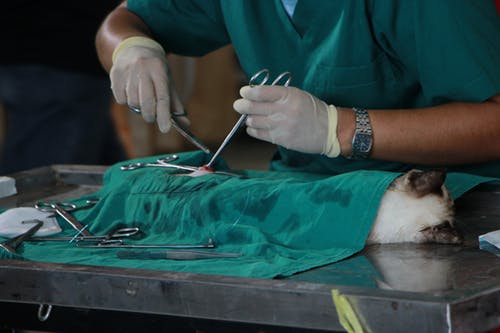Animals may require surgery to correct problems caused by bone fractures or other injuries, just as humans may require orthopedic procedures to fix these issues. Dogs’ orthopedic surgeries are becoming more common, with veterinarians and specialized surgeons working to repair and replace broken bones.
What is the most critical point of your pet’s rehabilitation or surgery?
Although orthopedic surgery is expensive and requires a lengthy recovery period, it can significantly increase your dog’s life length and quality. Consult the veterinarian in Plains animal hospital if you are worried that your dog may require more complex orthopedic procedures.
Although providing a comprehensive overview of orthopedic procedures associated with various dog injuries is difficult.
Orthopedic Surgery
Get your dog inspected by a vet if you think it has a broken bone. You might want to consider surgical intervention. Your veterinarian should look for visible bone fractures and wounds, but most pets believe that if they do not see a problem, it does not exist. It’s not correct. If you think your pet has been in an accident, the veterinarian will examine the visible injuries to internal organs, wounds, and other damages.
If you are looking for a vet, type in your search bar “orthopedic vet near me” to find the nearest surgical vet facility in your area.
Fractures and Their Types
A bone fracture is a crack/break in the bone. There are several different types of fractures, each with its own set of complications and treatment options.
- Closed Fractures – it is not associated with an external wound.
- Open Fractures (also known as compounds) – The bone may or may not be visible through the injury.
- Dislocation – An injury breaks the connective tissues that hold a joint together, which moves a bone at the joint.
- Sprain – An injury to a joint, ligament, or tendon in a joint region. Partially tearing or stretching these structures without fracture or dislocation is what this procedure entails.
Torn ligaments, particularly in the knee, maybe the result of other orthopedic injuries. Many athletic large breed dogs have torn cranial-cruciate ligaments in their knees. Therefore, there is a sudden loss of leg function, joint swelling, and knee pain. Surgical stabilization is the most effective way to treat the injury.
Fractures, broken bones, and torn ligaments are not always visible, and they may necessitate surgical intervention to heal properly. Your veterinarian can perform these procedures. However, specialists may be required depending on the injuries’ nature, history, and your veterinarian’s experience and degree.
The length of time will vary on your dog’s health, the injury’s nature, and the cost and invasiveness of orthopedic surgical procedures for dogs. Consider the cost of operating time, anesthesia, rehabilitation, and medications.
Rehabilitation
Your dog will almost certainly need rehabilitation after the procedure. Both the pet and the owner may experience difficulties. The pet will most likely need to be restrained for at least two weeks while making the repairs.
Your dog may be locked in a sleeping area for an extended period. After the first two weeks of recovery, the rehabilitation process can last four months, strictly limiting exercise and activities. To avoid further injuries, you must keep a close eye on your pet.
Also, even if the dog appears to be healthy, you should follow the advice of your veterinarian. Many pet owners allow their dogs to return to normal quickly. It raises the likelihood of injury recurrence. Always check your veterinarians’ website for more information regarding this.
As a Summary
Orthopedic procedures are typically performed by veterinarians shortly after an injury has been present for an extended time. As a result, it is critical to take your dog to a veterinarian immediately after an injury. When illnesses go untreated, they can cause excruciating pain. However, bone injuries and pain could spread.
Additionally, before surgery, the veterinarian will provide you with instructions to ensure that your pet is physically and mentally prepared for treatment, such as fasting and other preventative measures.




